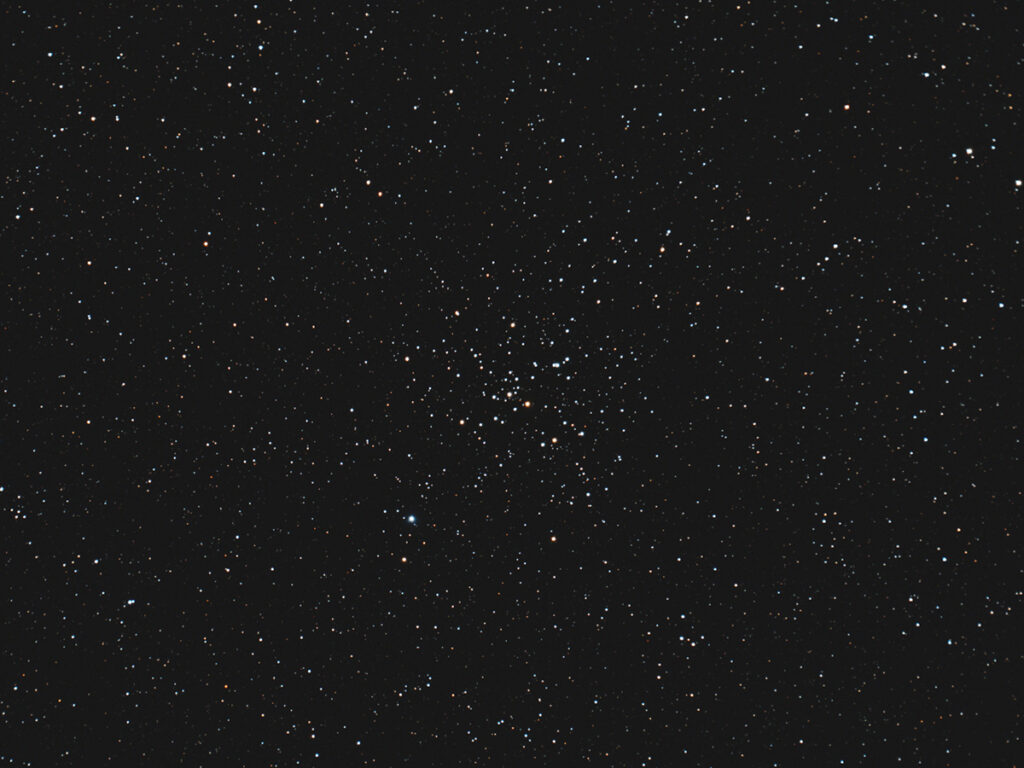
Telescope: Meade SN6 Comet Tracker at f/3.6, Orion Atlas EQ-G
Camera: Full Spectrum Modified Nikon D5300, Baader Mk III MPCC
Filter: Orion Imaging Skyglow Filter
Guide scope: Orion 50mm, ZWO ASI120MM mini
Exposure: 28x60sec, ISO 200, saved as RAW
Darks: Internal (Long Exposure Noise Reduction On)
Flats: 32×1/10sec, Tee shirt flats taken at dusk
Average Light Pollution: Red zone, Bortle 8, poor transparency, bright moonlight
Lensed Sky Quality Meter: 18.0 mag/arc-sec^2
Stacking: Mean with a 2-sigma clip.
White Balance: Nebulosity Automatic
Software: Backyard Nikon, Deep Sky Stacker, Nebulosity, Photoshop
M41 is a beautiful open cluster located 4 degrees south of the brilliant star Sirius. This is one of my favorite clusters for binoculars and small telescopes and it can even been glimpsed with the naked eye under dark skies. The cluster is also relatively large, covering an area that is about the size of the full moon.
M41 is currently well placed rising in the southeast during the early evening; center Sirius in your eyepiece and then sweep due south until you spot a patch of stardust.









Recent Comments